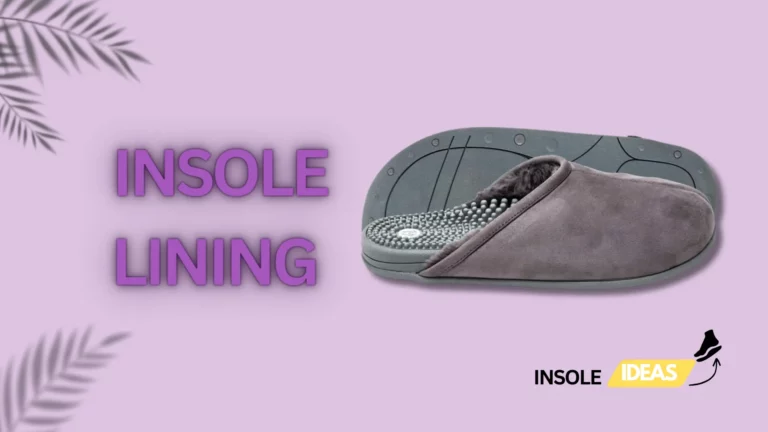Exploring the Impact of Insoles on Plantar Fasciitis
Plantar fasciitis is a prevalent foot condition that affects the plantar fascia, a ligament connecting the heel bone to the toes. It’s characterised by inflammation, often resulting in heel pain and discomfort during movement. In order to manage the symptoms of this ailment and enhance foot health, it is imperative to comprehend the relevance of appropriate treatment approaches.
Plantar Fasciitis
Plantar fasciitis is a prevalent foot ailment that affects people of all ages and hobbies. Intense heel pain is how it usually appears, especially in the mornings or after extended periods of inactivity. The disease may impede daily activities, which may affect mobility and general well-being.
Brief Overview of Plantar Fasciitis
Overstretching or inflammation of the plantar fascia, the thick band of tissue supporting the foot arch, can be brought on by biomechanical problems, overstress, or improper footwear. This inflammation results in pain and stiffness, making walking or standing uncomfortable.
Importance of Effective Treatment
Effective treatment of plantar fasciitis is essential to alleviate discomfort, restore foot function, and prevent long-term complications. Ignoring symptoms or inadequate treatment can exacerbate the condition, leading to chronic pain and mobility issues.
Understanding Plantar Fasciitis
Understanding the causes, symptoms, and mechanisms behind plantar fasciitis is crucial in developing targeted treatment approaches.
Definition and Causes
Plantar fasciitis stems from repetitive stress or overuse, leading to micro-tears in the plantar fascia. Contributing factors include obesity, high-impact activities, improper footwear, and structural foot abnormalities.
Common Symptoms
Individuals with plantar fasciitis commonly experience sharp or stabbing heel pain, especially during the initial steps in the morning or after prolonged periods of inactivity. The pain may diminish with activity but often returns after extended periods of standing or walking.
The Role of Insoles in Foot Health
For those with plantar fasciitis, insoles—also known as orthotics or shoe inserts—are essential for managing symptoms and preserving foot health.
How Insoles Function
Insoles function by providing additional support, redistributing pressure, and cushioning the foot. They help in reducing strain on the plantar fascia, thereby relieving pain and discomfort.
Types of Insoles Available
There are various types of insoles available, including arch supports, cushioned insoles, and custom orthotics. Each type aims to address specific foot issues and provide tailored support for individuals with plantar fasciitis.
Scientific Evidence on Insoles
The use of scientific studies is essential to comprehending how well insoles work to treat plantar fasciitis. Rigorous studies and findings provide valuable insights into the benefits and limitations of using insoles as a treatment modality for this condition.
Research Studies and Findings
Numerous research studies have delved into the efficacy of insoles in addressing plantar fasciitis. These studies often analyze the impact of different types of insoles, their materials, and designs on reducing pain and improving foot function. Findings commonly highlight a significant reduction in pain levels and enhanced comfort among individuals using specific types of insoles.
Expert Opinions
Expert opinions from podiatrists, orthopedic specialists, and biomechanics experts provide additional credibility to the use of insoles for plantar fasciitis. Their insights are often based on clinical experience, observations, and patient outcomes. These professionals frequently advocate for the incorporation of insoles as part of a comprehensive treatment plan for managing plantar fasciitis.
Assessing the Suitability of Insoles for
Plantar Fasciitis
Determining the appropriateness of using insoles involves considering various factors, including individual characteristics, potential risks, and the limitations associated with their use.
Identifying the Right Candidates
Not all individuals with plantar fasciitis may benefit equally from using insoles. Factors such as the severity of the condition, foot biomechanics, and lifestyle factors need consideration. Identifying suitable candidates involves assessing the specific needs and foot characteristics of the individual to ensure optimal outcomes.
Potential Risks and Limitations
While insoles offer substantial benefits, they also come with certain risks and limitations. These may include temporary discomfort during the adjustment period, exacerbation of symptoms if the insoles are ill-fitted, or reliance on them without addressing underlying biomechanical issues.
Benefits of Using Insoles
Insoles serve as a valuable non-invasive intervention for managing plantar fasciitis, offering various benefits that contribute to improved foot health and comfort.
Pain Relief
For those with plantar fasciitis, one of the main benefits of using insoles is their substantial pain alleviation capabilities. Insoles assist in relieving pressure on the plantar fascia and supporting the arch of the foot, which lessens pain and discomfort.
Improved Foot Arch Support
Insoles designed with proper arch support can effectively address biomechanical issues associated with collapsed or weakened arches. This support not only reduces pain but also enhances overall foot stability and function.
Prevention of Further Damage
By providing cushioning and support, insoles assist in preventing further damage to the plantar fascia. They help optimize foot mechanics and reduce the impact of daily activities on the affected area, potentially preventing the worsening of the condition.
Combining Insoles with Other Treatments
Plantar fasciitis treatment often involves a multifaceted approach that combines various interventions to maximize effectiveness. Incorporating insoles alongside other treatments can enhance overall outcomes and expedite recovery.
Physical Therapy
Thorough treatment for plantar fasciitis must include physical therapy. Its main goals are to improve flexibility, strengthen the muscles that support the foot, and address irregularities in gait. When combined with insoles, physical therapy can address underlying biomechanical issues while providing support and stability, complementing the effects of insoles.
Stretching Exercises
Stretching exercises target the calf muscles and the plantar fascia itself, aiming to alleviate tension and promote flexibility. When paired with insoles, these exercises can prevent muscle tightness and reinforce the benefits of using insoles by maintaining proper foot alignment and reducing strain on the plantar fascia.
Footwear Recommendations
Choosing appropriate footwear is pivotal in managing plantar fasciitis. Insoles can significantly enhance the supportive features of shoes. Recommendations often include shoes with adequate arch support, cushioning, and a supportive heel counter. Combining insoles with recommended footwear ensures continuous support and comfort throughout the day.
Conclusion: Plantar Fasciitis
Plantar fasciitis is a challenging condition that significantly impacts daily life. Insoles play a crucial role in its management, offering substantial relief and support to individuals dealing with the discomfort associated with this ailment.
Recapitulation of Insoles’ Role in Plantar Fasciitis Treatment
Insoles serve as a non-invasive, cost-effective, and versatile treatment option for plantar fasciitis. They address multiple aspects of the condition by providing targeted support, redistributing pressure, and improving foot mechanics. Insoles are more successful in reducing pain and accelerating healing when combined with other therapies like physical therapy, stretches, and appropriate footwear.



